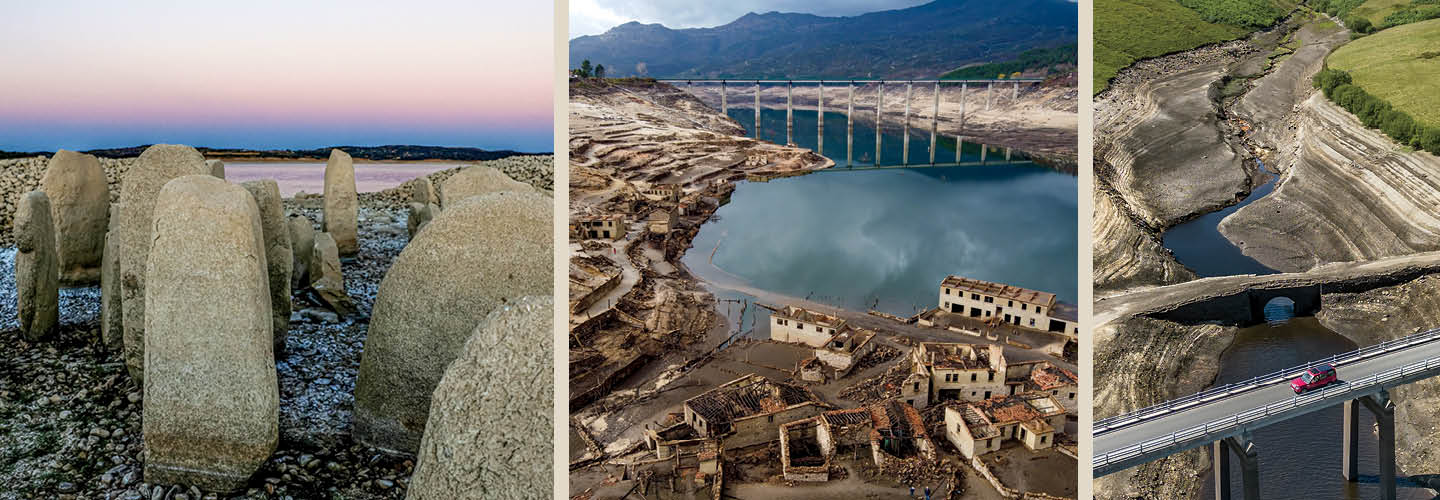Last summer, Europe experienced intense heat waves and the worst drought in 500 years. The hot and dry conditions fueled wildfires across the continent, destroyed crops, and resulted in thousands of deaths. The record-breaking high temperatures and lack of rainfall caused many lakes and rivers to dry up. The reduced water levels revealed submerged historical and cultural artifacts, including monuments, bridges, and villages.
Archaeologists are excited to investigate the ruins, like a prehistoric monument called the Dolmen of Guadalperal, shown above left. It reappeared as waters receded in a reservoir in Spain. Little is known about the monument made of giant stones, which is estimated to be 4,000 to 5,000 years old. “It’s a rare opportunity to be able to access it,” said Enrique Cedillo, an archaeologist at Complutense University of Madrid.

